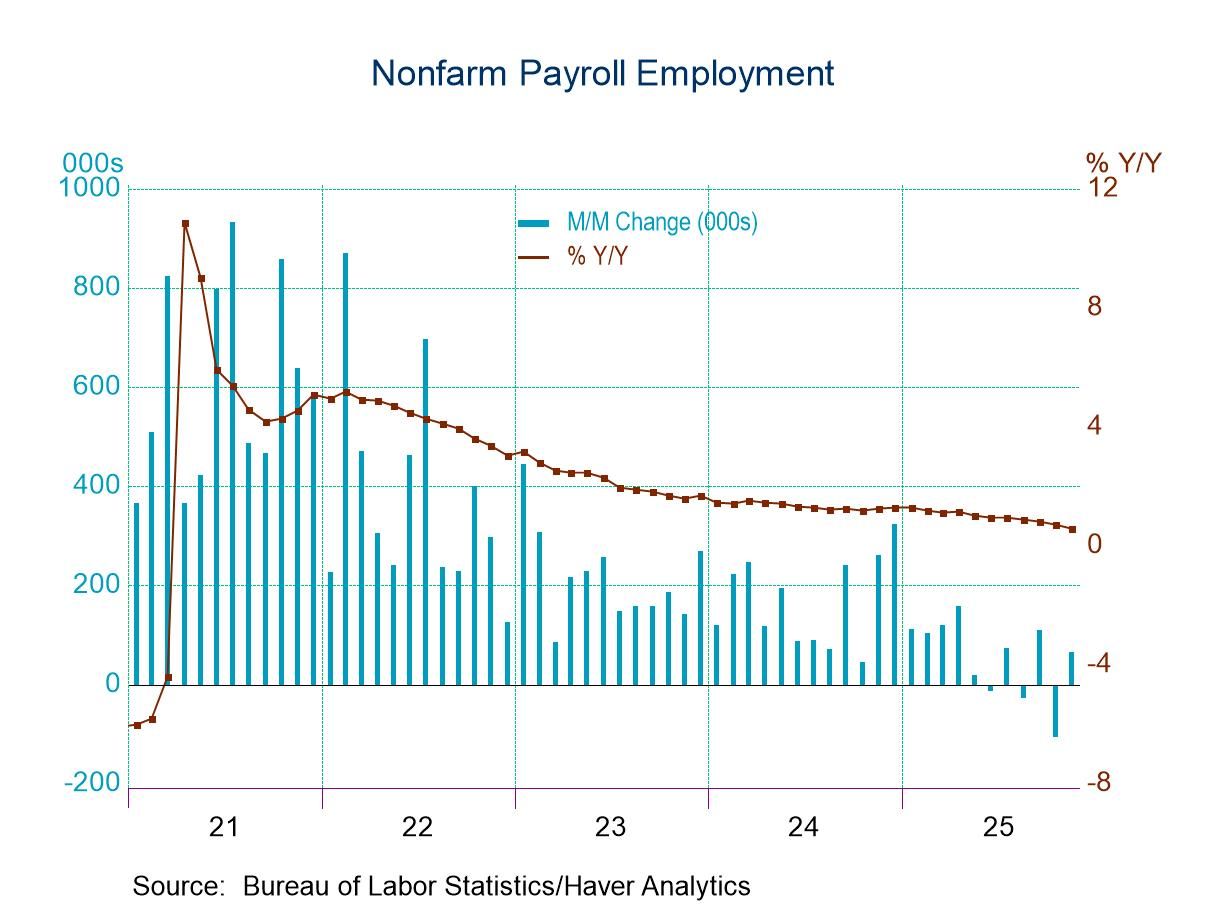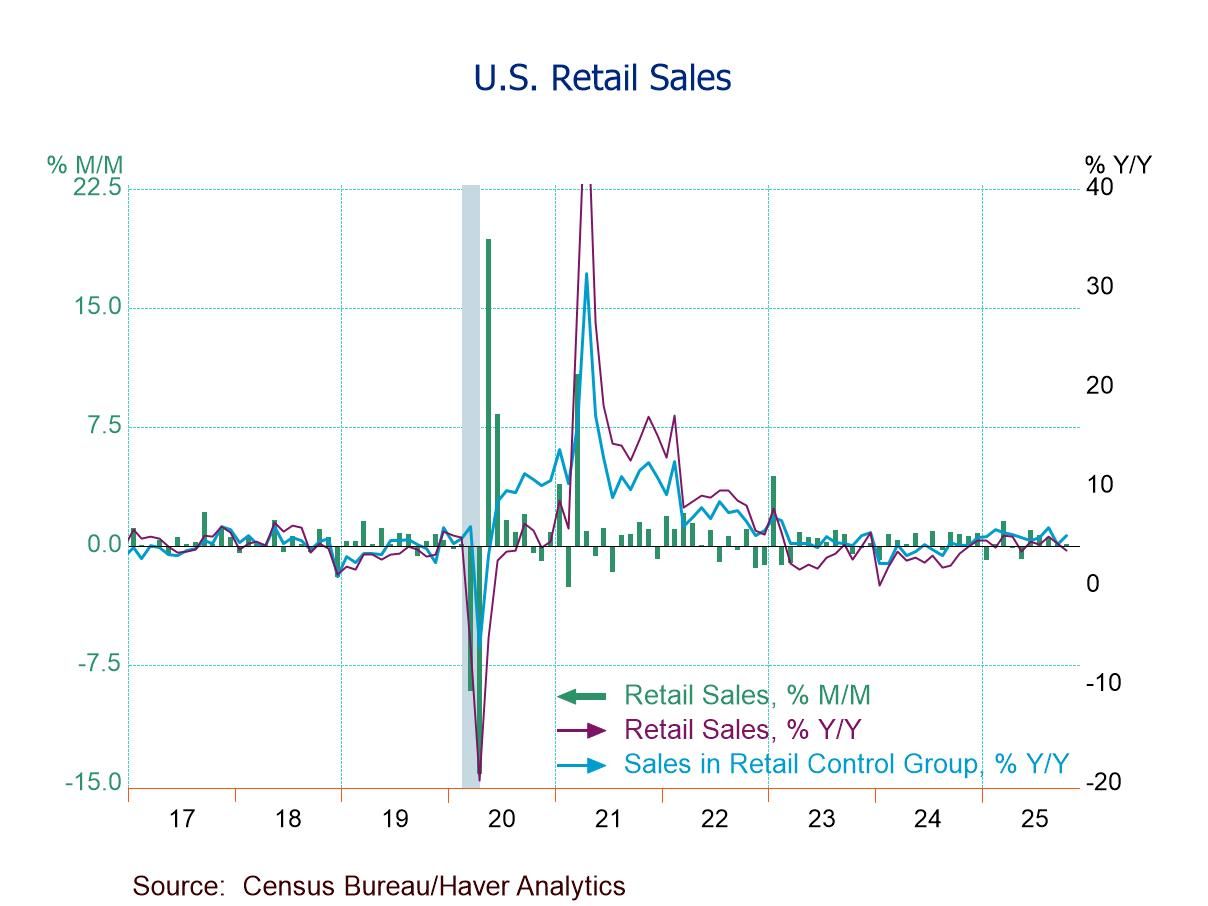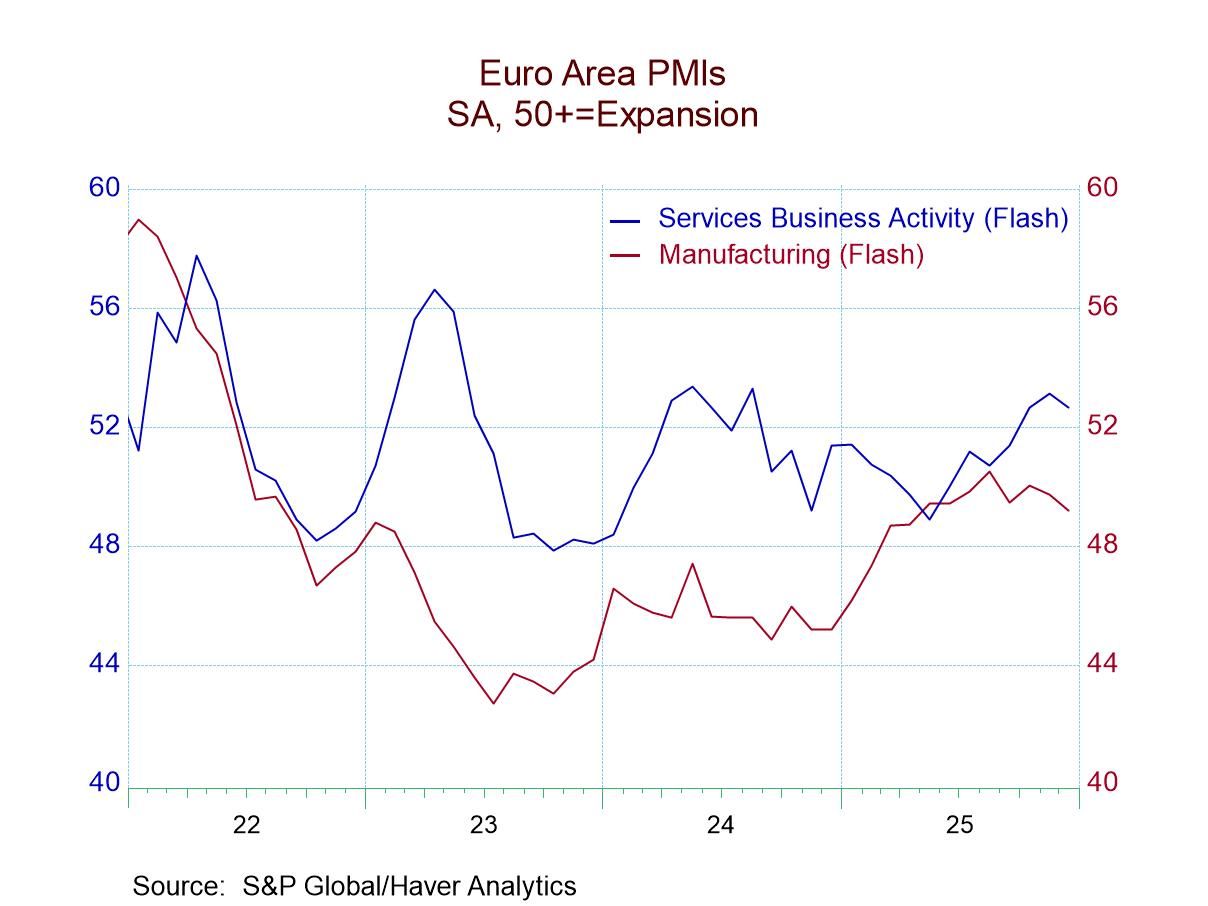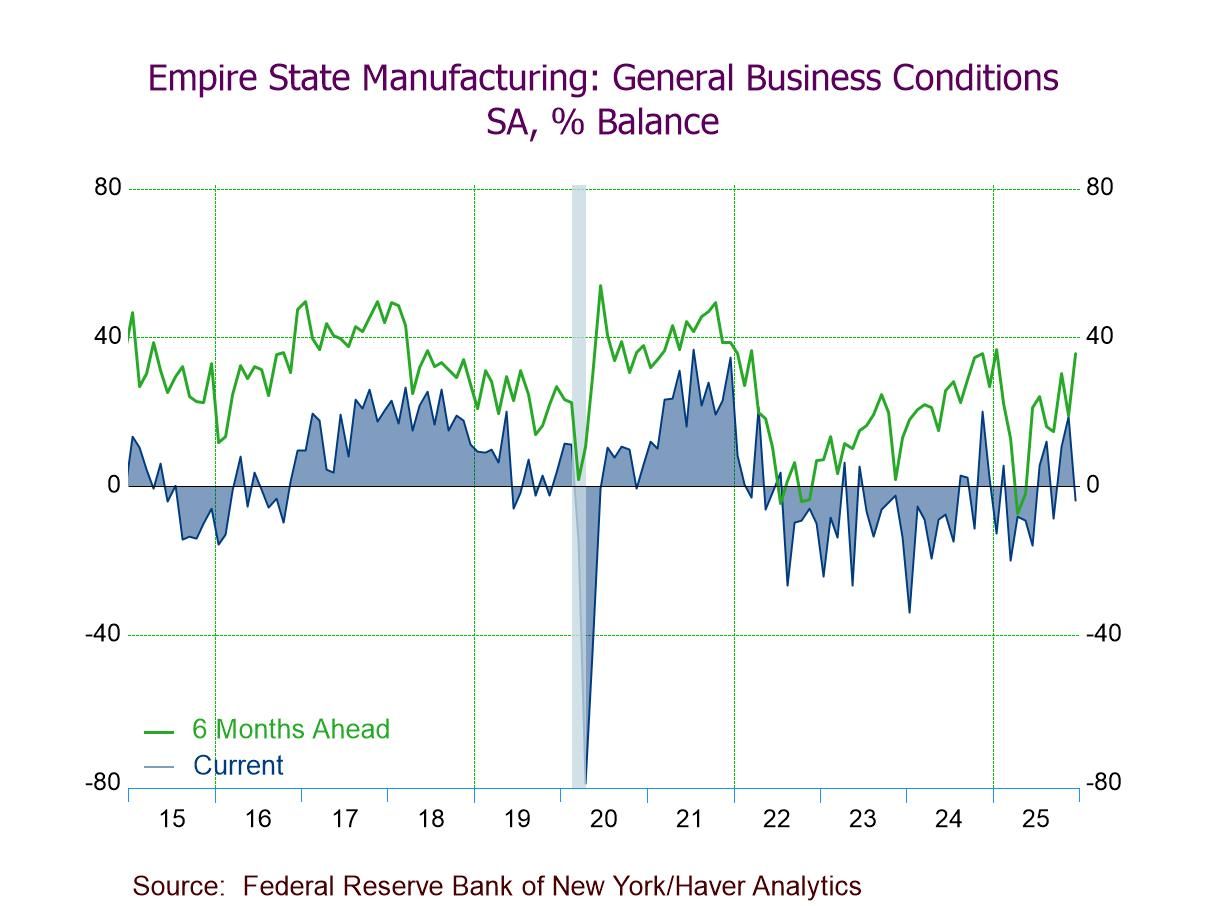U.S. Trade Deficit Deepens in January to Another Record
by:Tom Moeller
|in:Economy in Brief
Summary
- Deficit is surprisingly large as petroleum imports surge.
- Goods deficit widens to record, while services surplus was little changed.
- Exports recover half of December’s decline and imports jump.


The U.S. trade deficit in goods and services (BOP basis) widened to $131.4 billion in January from $98.1 billion in December, revised from $98.4 billion, and $78.2 billion in November, revised from $78.9 billion, according to the U.S. Census Bureau. A $123.0 billion deficit was expected by the Action Economics Forecast Survey. Exports rose 1.2% (4.1% y/y) in January after falling 2.6% in December. This was accompanied by a 10.0% (23.1% y/y) jump in imports which came after a 3.6% December gain.
The deficit in goods trade (BOP basis) swelled to $156.8 billion from $123.3 billion in December, revised from $123.0 billion. Goods exports (customs value) rose 1.6% (1.3% y/y) in January, after falling 3.8% in December. The January increase reflected an 8.1% (10.1% y/y) rise in capital goods exports which came after a 2.6% decline, and an 8.5% jump (0.4% y/y) in nonauto consumer goods exports which recouped an 8.4% December decline. Foods, feeds & beverage exports weakened 7.2% (-1.7% y/y) following a 1.1% December decline. Auto exports dropped 3.1% (-15.5% y/y) after a 6.6% weakening. Industrial supplies exports eased 0.7% (-2.0% y/y) following a 3.0% December drop.
Imports of goods surged 12.5% (26.1% y/y) in January after two monthly increases of roughly 4.2%. The strength was led by a 34.3% jump (65.3% y/y) in imports of industrial supplies and materials which came after a 19.1% jump in December. Nonauto consumer goods imports climbed 8.3% (26.0% y/y) following a 3.1% December increase. Capital goods imports rose 5.5% (18.2% y/y) following a 1.5% rise. Foods, feeds & beverage imports rose 4.3% (19.2% y/y) following a 1.6% decline while auto imports increased 2.3% (-6.1 y/y) after a 5.5% December drop. Petroleum imports by end-use fell 1.1% (-2.3% y/y) after a 4.6% rise. Nonpetroleum imports shot up 13.4% (28.4% y/y) following a 4.0% December rise.
The inflation-adjusted goods trade deficit (customs value) soared to $142.9 billion in January from $112.1 billion in December. Real exports rose 0.4% (-0.9% y/y) after a 3.9% decline in December while real imports rose 12.4% (24.4% y/y) in January following a 3.9% December rise.
The services trade surplus of $25.4 billion in January compared to $25.2 billion in December. Service exports edged up 0.6% (9.5% y/y) after the same increase in December. Monthly gains in service exports were led by a 3.7% rise (37.6% y/y) rise in exported construction services. Travel services exports gained 0.4% (10.8% y/y) and financial exports increased 1.4% (9.6% y/y). Service imports rose 0.6% (12.1% y/y) in January following a 1.6% gain in December. Monthly gains in service imports were widespread. Maintenance & repair services rose 2.4% (33.1% y/y) while imported transport services gained 0.2 (14.2% y/y). Imported travel services eased 0.7% (+12.4% y/y) while charges for use of intellectual property rose 3.1% (23.4% y/y).
The U.S. goods trade deficit with China deepened to a seasonally adjusted $29.7 billion in January from $25.3 billion in December. Exports to China fell 9.8% (-18.5% y/y) while imports increased 8.8% (11.5% y/y). The deficit with the European Union deepened to $25.5 billion in January from $20.4 billion in December, while the deficit with Japan expanded to $7.4 billion from $5.5 billion.
The international trade data, including relevant data on oil prices, can be found in Haver’s USECON database. Detailed figures on international trade are available in the USINT and USTRADE databases. The expectations figures are from the Action Economics Forecast Survey in AS1REPNA.


Tom Moeller
AuthorMore in Author Profile »Prior to joining Haver Analytics in 2000, Mr. Moeller worked as the Economist at Chancellor Capital Management from 1985 to 1999. There, he developed comprehensive economic forecasts and interpreted economic data for equity and fixed income portfolio managers. Also at Chancellor, Mr. Moeller worked as an equity analyst and was responsible for researching and rating companies in the economically sensitive automobile and housing industries for investment in Chancellor’s equity portfolio. Prior to joining Chancellor, Mr. Moeller was an Economist at Citibank from 1979 to 1984. He also analyzed pricing behavior in the metals industry for the Council on Wage and Price Stability in Washington, D.C. In 1999, Mr. Moeller received the award for most accurate forecast from the Forecasters' Club of New York. From 1990 to 1992 he was President of the New York Association for Business Economists. Mr. Moeller earned an M.B.A. in Finance from Fordham University, where he graduated in 1987. He holds a Bachelor of Arts in Economics from George Washington University.






